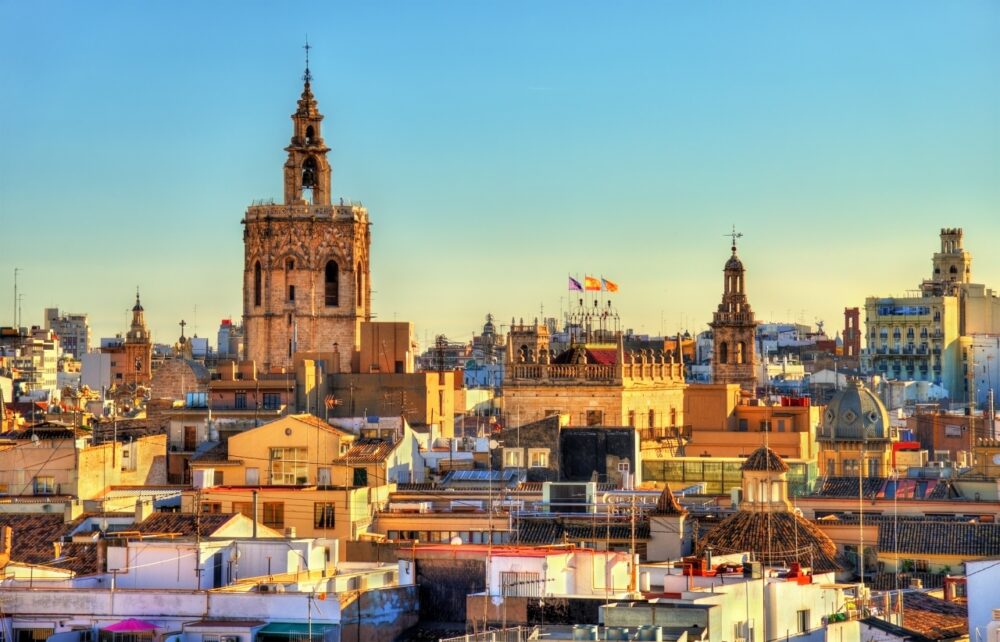
Is Valencia worth visiting? Without a doubt! The first time I visited Valencia, I was struck by its perfect balance of history, culture, and modern flair. Whether I was wandering through the narrow streets of the Old Town, marvelling at the futuristic architecture of the City of Arts and Sciences, or enjoying a plate of authentic paella by the beach, Valencia had me hooked. It’s the kind of city that offers something for everyone, without the overwhelming crowds of other Spanish destinations.
Nestled on Spain’s southeastern coast, Valencia is the country’s third-largest city and a vibrant mix of old and new. Its Old Town, with highlights like the Valencia Cathedral and the Silk Exchange (a UNESCO World Heritage Site), is steeped in history. But Valencia isn’t stuck in the past—it’s also home to cutting-edge design, green spaces like the Turia Gardens, and a buzzing food scene. And let’s not forget the beaches! Whether you’re exploring its cultural gems or soaking up the Mediterranean sun, Valencia is a city that effortlessly blends tradition and modernity.
But is Valencia worth visiting for you? In this blog post, we’ll dive into the top 10 reasons why Valencia should be on your travel list, from its stunning architecture to its iconic cuisine. Plus, we’ll share travel tips to help you make the most of your visit to this coastal Spanish gem. Keep reading to discover why Valencia might just be your next favourite destination.
Table of Contents
Pros – Reasons You Should Visit Valencia
1. A Perfect Blend of Historic and Modern Architecture
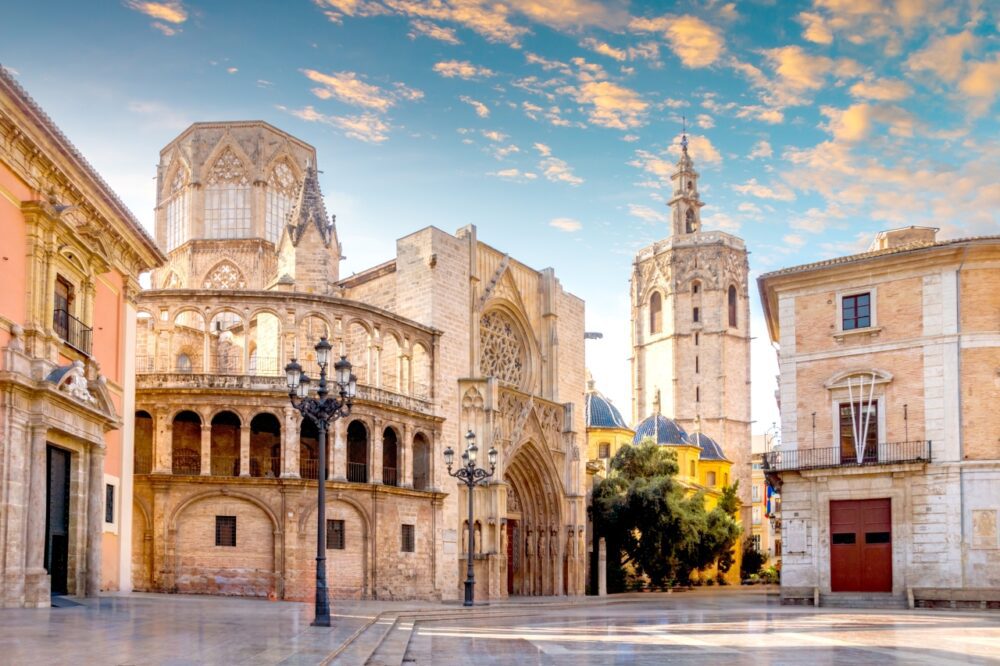
Valencia is a city where centuries-old history meets cutting-edge modern design. The historic center is filled with Gothic and Baroque buildings, while the futuristic City of Arts and Sciences looks like something out of a sci-fi movie. Walking through the city, you’ll see ancient towers, medieval churches, and sleek, contemporary structures all blending seamlessly together.
I started my visit at the Valencia Cathedral, a stunning mix of Romanesque, Gothic, and Baroque styles, and even climbed the Miguelete Tower for a panoramic view of the city. Later, I explored the City of Arts and Sciences, where the ultra-modern Hemisfèric and the curved, white buildings of the complex made me feel like I had stepped into the future. The contrast between old and new in Valencia makes every street feel like an open-air museum.
2. Home to the Original Paella
Valencia is the birthplace of paella, one of Spain’s most famous dishes. Unlike the seafood version popular in other parts of the country, the traditional Valencian paella is made with chicken, rabbit, green beans, and saffron-infused rice. Many restaurants in the city take great pride in cooking paella the authentic way, using wood-fired techniques that give it a distinct smoky flavor.
I had paella at a small, family-run restaurant near Albufera, the region where paella rice is grown. The dish arrived in a massive pan, the rice perfectly crispy at the bottom (a layer called socarrat), and the flavors were incredible. It’s an absolute must-try when visiting Valencia, and experiencing it in the city where it was created makes it even more special.
3. The Stunning City of Arts and Sciences
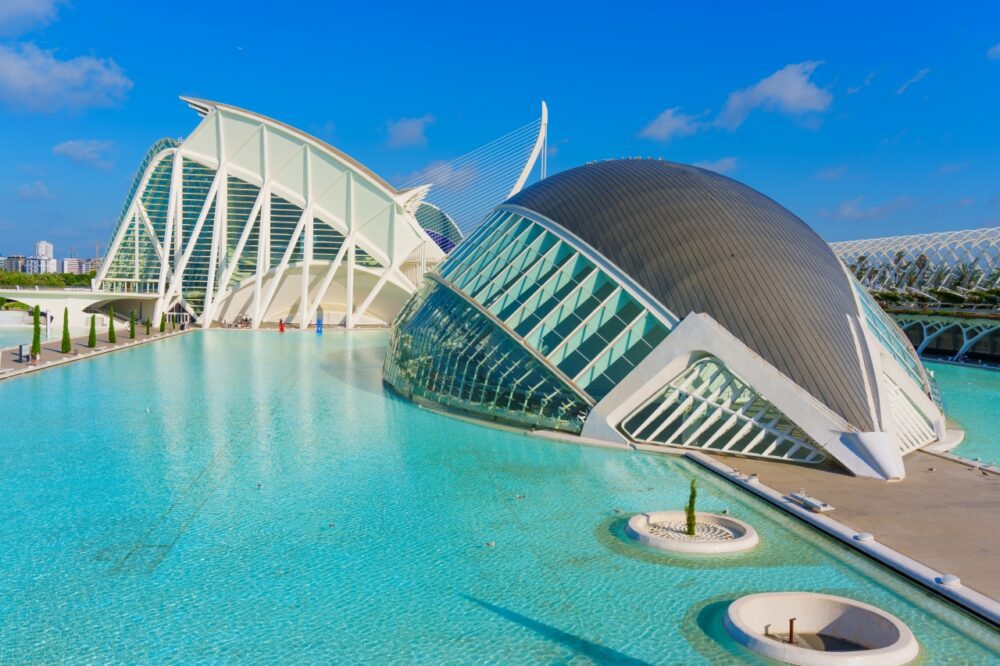
One of Valencia’s most iconic attractions, the City of Arts and Sciences, is a masterpiece of modern architecture. Designed by Santiago Calatrava, this complex houses an interactive science museum, an oceanographic park, an IMAX cinema, and performing arts spaces—all in some of the most striking buildings you’ll ever see.
I spent an entire afternoon here, starting with the Oceanogràfic, the largest aquarium in Europe, where I saw beluga whales, jellyfish, and even walked through a tunnel surrounded by sharks. Then, I explored the Príncipe Felipe Science Museum, which had hands-on exhibits that made learning about physics and biology fun. Even if you don’t go inside, just walking around the futuristic buildings and reflecting pools is an unforgettable experience.
4. Beautiful Beaches Without the Overcrowding
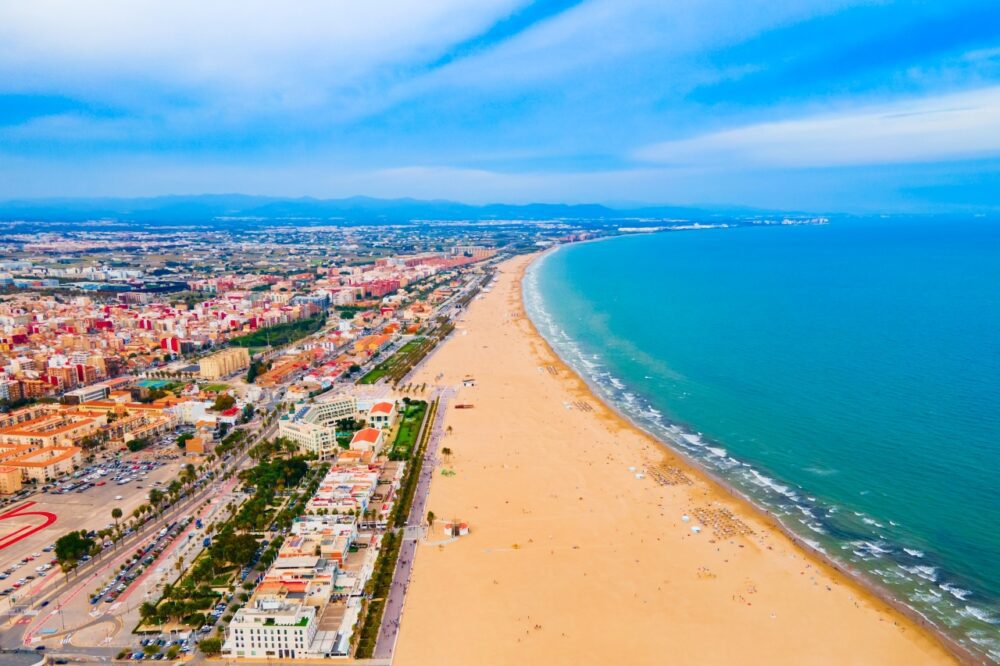
Unlike Barcelona’s often-packed beaches, Valencia offers miles of wide, sandy coastline that never feels too crowded. The main city beaches, Malvarrosa and Patacona, are easily accessible, clean, and lined with palm trees, making them perfect for a relaxing day by the Mediterranean.
I walked along Malvarrosa Beach in the evening, and it was the perfect place to unwind. The golden sand stretched for miles, and there were plenty of beachfront bars and restaurants where I could enjoy a drink while watching the sunset. If you’re looking for a more peaceful escape, nearby beaches like El Saler offer even quieter spots with natural dunes and clear blue water.
5. The Lush Turia Gardens Running Through the City
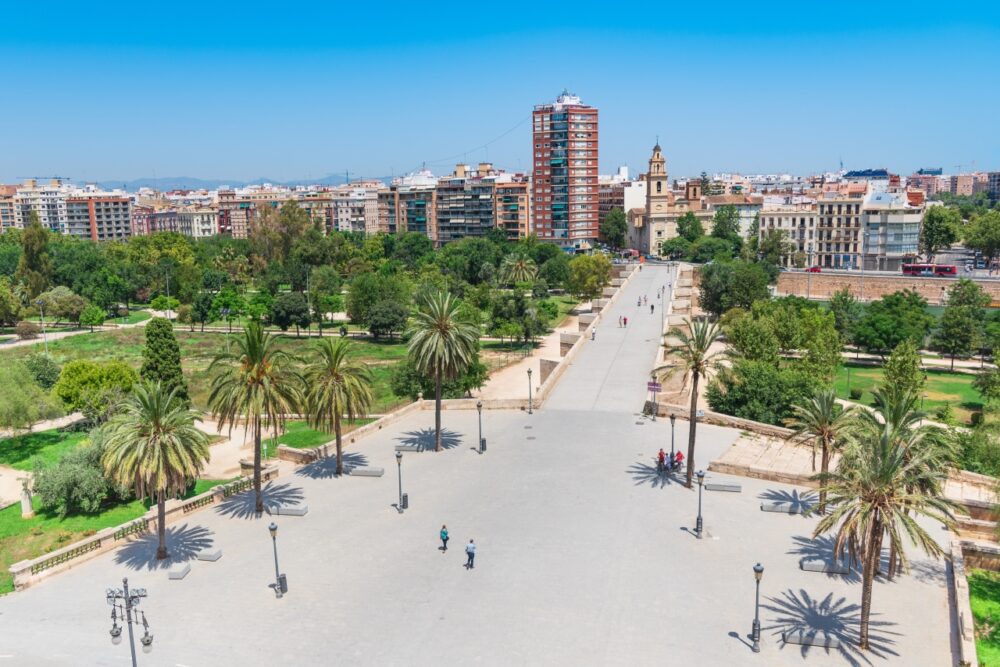
One of Valencia’s most unique features is the Turia Gardens, a massive green space that runs through the heart of the city. Originally a river, the Turia was diverted after a devastating flood, and the old riverbed was transformed into a park filled with walking and biking trails, fountains, and picnic areas.
I rented a bike and cycled through the entire park, passing playgrounds, orange groves, and even a giant Gulliver statue that kids can climb on. The park also connects to the City of Arts and Sciences, making it a scenic route to one of Valencia’s biggest attractions. It’s one of the best urban parks I’ve ever seen, offering a peaceful retreat right in the middle of the city.
6. A Vibrant Street Art Scene
Valencia has one of Spain’s best street art scenes, particularly in the El Carmen neighborhood. The walls here are covered with colorful murals, graffiti, and artistic expressions that range from political statements to abstract designs. Unlike some cities where street art is seen as vandalism, in Valencia, it’s embraced as part of the culture.
I spent a morning wandering through the alleys of El Carmen, discovering hidden murals at every turn. Some were small, humorous sketches, while others were massive, detailed pieces stretching across entire buildings. It felt like an open-air art gallery, constantly evolving with new works appearing all the time.
7. A More Laid-Back and Affordable Alternative to Barcelona
While Barcelona gets most of the attention, Valencia offers many of the same attractions—stunning architecture, beaches, incredible food, and lively nightlife—without the overwhelming crowds and high prices. The city feels more relaxed, making it a great place to experience authentic Spanish culture at a slower pace.
I noticed right away how much easier it was to explore Valencia compared to Barcelona. There were no long lines at major attractions, I didn’t have to push through crowds on the streets, and restaurants were much more affordable. If you want a Spanish city with all the beauty and culture but less of the stress, Valencia is a perfect choice.
8. Incredible Festivals, Especially Las Fallas
Valencia is famous for Las Fallas, one of Spain’s most spectacular festivals. Every March, the city transforms into a giant party, with massive papier-mâché sculptures (some as tall as buildings) placed throughout the streets. The festival ends with the Cremà, where these sculptures are set on fire in a dramatic, fiery spectacle.
I was lucky enough to experience Las Fallas, and the energy in the city was unbelievable. The parades, fireworks, and music created a nonstop celebration, and the final night’s burning of the sculptures was both mesmerizing and bittersweet. Even if you can’t visit during the festival, Valencia’s festive spirit is present year-round, with many smaller events happening throughout the seasons.
9. Warm Weather Year-Round
Valencia enjoys a Mediterranean climate, meaning mild winters and hot, sunny summers. Even in the colder months, daytime temperatures rarely drop below 15°C (59°F), making it a great destination any time of the year.
I visited in November, expecting cooler weather, but it was warm enough to walk around in a t-shirt during the day. The lack of extreme winter temperatures makes Valencia an ideal escape for those looking to avoid harsh cold climates while still enjoying a European city experience.
10. A Friendly and Welcoming Atmosphere
One of the things I loved most about Valencia was how welcoming the locals were. The city has a warm, inviting energy, and people are happy to chat, give recommendations, and share their love for their home. Whether in markets, cafés, or small neighborhood bars, I found people to be genuinely friendly and open.
During one of my meals at a local tapas bar, the owner struck up a conversation and ended up giving me a list of must-visit places that weren’t in any guidebook. Unlike in larger cities where people can feel more rushed, Valencia’s relaxed vibe makes it easy to connect with both locals and fellow travelers.
Cons – Things to Consider When Visiting Valencia
1. Summers Can Be Extremely Hot and Humid
Valencia’s Mediterranean climate means plenty of sunshine, but during the peak summer months of July and August, the heat can be intense. Temperatures often reach 35°C (95°F) or higher, and the humidity makes it feel even hotter. While the city’s beaches offer a great way to cool off, sightseeing in the city center during midday can be exhausting.
I visited Valencia in August, and even short walks between attractions felt challenging under the intense sun. I had to take frequent breaks in shaded areas or air-conditioned cafés, and even then, the heat was draining. Many locals actually leave the city during this time, heading to the mountains or cooler coastal areas. If you don’t handle heat well, visiting in spring or early autumn is a much more comfortable experience.
2. The City Slows Down During Siesta Hours
Like many parts of Spain, Valencia observes the traditional siesta, meaning that many shops, small businesses, and even some restaurants close for a few hours in the afternoon, typically between 2:00 and 5:00 p.m. While larger supermarkets and chain stores stay open, smaller local businesses often shut down, which can be inconvenient for travelers.
I was caught off guard one afternoon when I went looking for a snack, only to find most of the local cafés and bakeries closed. Even some of the city’s main streets felt unusually quiet during these hours. While siesta time is a great opportunity to take a break and enjoy the slow pace of life, it’s something visitors should be aware of when planning their days.
3. Public Transportation is Good but Not as Extensive as in Larger Cities
Valencia has a metro, buses, and bike-sharing services, but its public transportation network isn’t as extensive as those in Madrid or Barcelona. While the metro is clean and efficient, it doesn’t cover every part of the city, and some popular destinations, like the beaches, require a combination of transport options or a longer walk.
I found that getting to the City of Arts and Sciences was easy by bus, but reaching some of the more off-the-beaten-path neighborhoods required extra planning. The metro also doesn’t run late into the night, which can be inconvenient if you’re out enjoying Valencia’s nightlife. While taxis and ride-sharing apps are available, those who rely heavily on public transport might find it a bit limiting.
4. Tourist Crowds Are Growing, Especially During Festivals
While Valencia isn’t as overwhelmed with tourists as Barcelona, the city has been gaining popularity in recent years. This is especially noticeable during major events like Las Fallas in March, when the city fills with visitors, hotel prices spike, and getting around becomes more difficult. Even outside of festival season, popular spots like the City of Arts and Sciences and the Central Market can get crowded.
I visited during a holiday weekend, and the crowds at La Lonja de la Seda, the city’s historic silk exchange, made it difficult to fully appreciate the beauty of the place. While Valencia still feels more relaxed than Spain’s biggest tourist hotspots, it’s definitely becoming more well-known, and certain attractions can feel busier than expected. Visiting during the off-season or early in the morning helps avoid the worst of the crowds.
5. English Isn’t as Widely Spoken as in Madrid or Barcelona
While Valencia is a major city, English is not as commonly spoken here as it is in Madrid or Barcelona. Many restaurants, small shops, and even some tourist attractions primarily use Spanish or Valencian (a regional language similar to Catalan). While younger people and those in hospitality generally speak some English, it’s not always guaranteed.
I had a few moments where I struggled to communicate, especially in more local areas. At one family-run restaurant, the menu was only in Spanish and Valencian, and the staff spoke very little English. While this wasn’t a huge issue—I used Google Translate and a bit of Spanish—it’s something to be aware of if you don’t speak the language. Learning a few basic Spanish phrases goes a long way in making interactions smoother.
When to Visit Valencia
The best times to visit Valencia, Spain’s sun-soaked Mediterranean gem, are spring (March to June) and autumn (September to October). The weather is warm but comfortable, perfect for strolling through the Turia Gardens or exploring the beaches. Spring also hosts the city’s famous Las Fallas Festival in March, an unmissable celebration of fire, fireworks, and intricate sculptures. Summer (July to August) brings hotter temperatures and beachgoers, but also fewer crowds in the city itself. Winters are mild and quiet, ideal for sightseeing without the tourist buzz, especially in the historic Old Town.
How to Get to Valencia
The main gateway to Valencia is Valencia Airport (VLC), located just 8 kilometres from the city centre. It’s served by airlines like Iberia, Ryanair, and Vueling, offering connections from across Europe. From the airport, the Metro Lines 3 and 5 will whisk you into the city in about 20 minutes. Alternatively, taxis and ride-hailing services like Cabify are available at a reasonable cost. If arriving by train, Valencia’s Joaquín Sorolla Station connects the city to Madrid and Barcelona via high-speed AVE trains, making rail travel an excellent option.
Where to Stay in Valencia
Valencia offers accommodation options to suit all styles and budgets, spread across its diverse neighbourhoods:
- Luxury: Ciutat Vella (Old Town) or Near the City of Arts and Sciences – Stay at Caro Hotel, a boutique gem set in a 19th-century palace, or the elegant Hotel Las Arenas Balneario Resort for beachfront luxury.
- Mid-range: Ruzafa or El Carmen – Trendy areas filled with cafes and culture. Consider Vincci Lys, a stylish choice near the city centre, or Petit Palace Plaza de la Reina, offering comfort in the heart of the Old Town.
- Budget: Benimaclet or Near the Train Station – Affordable choices include The River Hostel, a sociable and central option, or B&B Hi Valencia Cánovas, offering great value close to key attractions.
Getting Around Valencia
Valencia is incredibly easy to navigate thanks to its efficient and affordable public transport system. The MetroValencia network of trams and metro lines connects the city centre, beaches, and airport seamlessly, while EMT buses cover smaller routes. For budget-friendly travel, consider a Valencia Tourist Card, which offers unlimited public transport and discounts on attractions. Valencia is also a cycling paradise, with dedicated bike lanes throughout the city and the Valenbisi bike-sharing scheme providing cheap, convenient rentals. Walking is ideal for exploring the historic centre, while the metro or a tram ride will take you straight to Malvarrosa Beach.
How Long to Spend in Valencia
Three days is the perfect amount of time to explore Valencia’s highlights. Visit the futuristic City of Arts and Sciences, stroll through the historic Old Town, and enjoy paella (which originated here) by the sea. Spend a day cycling through the Turia Gardens, relaxing on Malvarrosa Beach, or exploring the vibrant neighbourhood of Ruzafa. With an extra day, take a trip to Albufera Natural Park for boat rides through its tranquil lagoons and stunning sunsets. Valencia’s mix of modern architecture, history, and coastal charm makes it a must-visit destination on Spain’s east coast.
Conclusion
So, is Valencia worth visiting? Absolutely! With its historic Old Town, stunning modern architecture, and beautiful Mediterranean beaches, Valencia is a city that truly has it all. Highlights like the City of Arts and Sciences, the Turia Gardens, and its world-famous paella make it an unforgettable destination. While it’s less crowded than cities like Barcelona or Madrid, it offers just as much charm and excitement. If you’re ready to experience the best of Spain’s coast and culture, start planning your trip to Valencia today—you’ll leave with memories to treasure!
